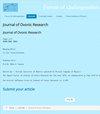Investigation on the physical properties of Ni doped SrTiO3 by first-principle calculations
IF 1.1
4区 材料科学
Q4 MATERIALS SCIENCE, MULTIDISCIPLINARY
引用次数: 0
Abstract
In present work, the magneto-electronic and optical features of Sr1-xNixTiO3 (x = 12.5%, 25%, 50% and 75%) compounds are calculated using full potential linearized augmented plane wave (FP-LAPW) scheme within density functional theory (DFT) as employed in WIEN2k software. The electronic band structures (BS) and density of states (DOS) interpret the induced half metallic ferromagnetism mainly originating from highly spin polarized Ni-d states. The computed value of total magnetic moment of Sr1-xNixTiO3 is 1.99998, 1.99991, 2.00003 and 2.00005 µB at 12.5%, 25%, 50% and 75% concentration respectively, which emerge primarily due to Ni-3d electrons. Furthermore, the optical features (refraction, dielectric function, absorption, and reflectivity) have also been computed within energy range of 0-10 eV. Sr1-xNixTiO3 is optically active in visible to ultraviolet (UV) region owing to low reflectivity and high absorption. Results portray that the studied compound is a potential contender for its usage in the development of spintronic and optoelectronic devices.用第一性原理计算研究Ni掺杂SrTiO3的物理性质
本文利用WIEN2k软件中的密度泛函理论(DFT),计算了Sr1-xNixTiO3 (x = 12.5%, 25%, 50%和75%)化合物的磁电子和光学特性。电子能带结构(BS)和态密度(DOS)解释了主要由高自旋极化Ni-d态引起的半金属铁磁性。在浓度为12.5%、25%、50%和75%时,Sr1-xNixTiO3的总磁矩计算值分别为1.99998、1.99991、2.00003和2.00005µB,主要是由Ni-3d电子产生的。此外,还计算了0-10 eV能量范围内的光学特性(折射率、介电函数、吸收和反射率)。Sr1-xNixTiO3由于其低反射率和高吸收率,在可见光到紫外(UV)区具有光学活性。结果表明,所研究的化合物在自旋电子和光电子器件的开发中具有潜在的竞争优势。
本文章由计算机程序翻译,如有差异,请以英文原文为准。
求助全文
约1分钟内获得全文
求助全文
来源期刊

Journal of Ovonic Research
MATERIALS SCIENCE, MULTIDISCIPLINARY-PHYSICS, APPLIED
CiteScore
1.90
自引率
20.00%
发文量
77
期刊介绍:
Journal of Ovonic Research (JOR) appears with six issues per year and is open to the reviews, papers, short communications and breakings news inserted as Short Notes, in the field of ovonic (mainly chalcogenide) materials for memories, smart materials based on ovonic materials (combinations of various elements including chalcogenides), materials with nano-structures based on various alloys, as well as semiconducting materials and alloys based on amorphous silicon, germanium, carbon in their various nanostructured forms, either simple or doped/alloyed with hydrogen, fluorine, chlorine and other elements of high interest for applications in electronics and optoelectronics. Papers on minerals with possible applications in electronics and optoelectronics are encouraged.
 求助内容:
求助内容: 应助结果提醒方式:
应助结果提醒方式:


